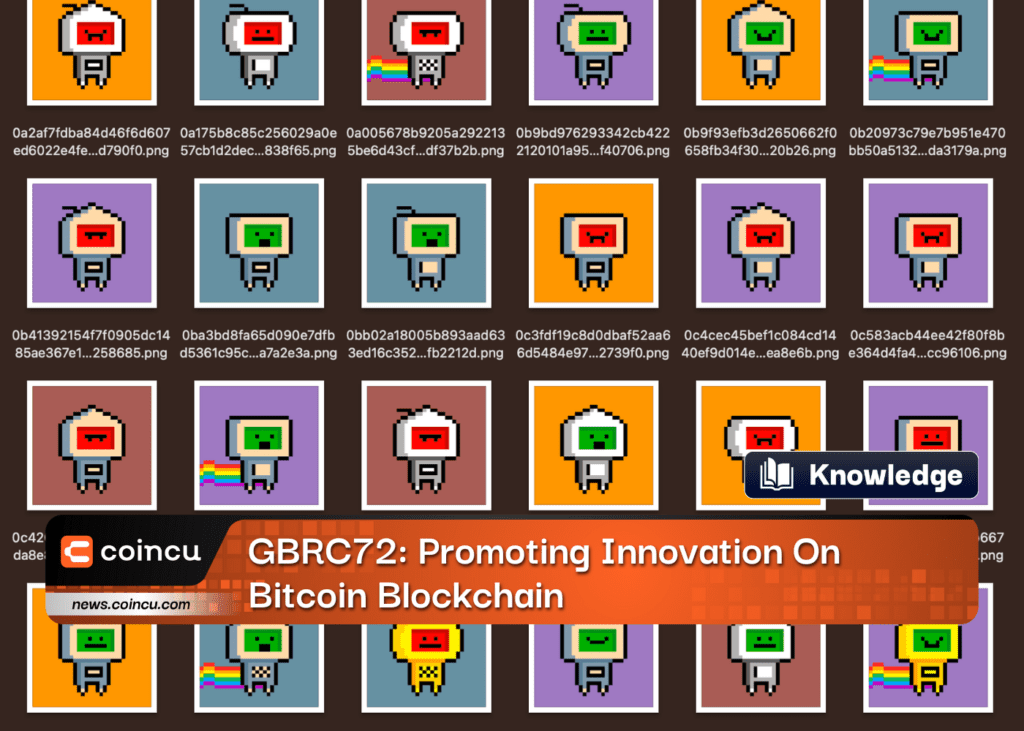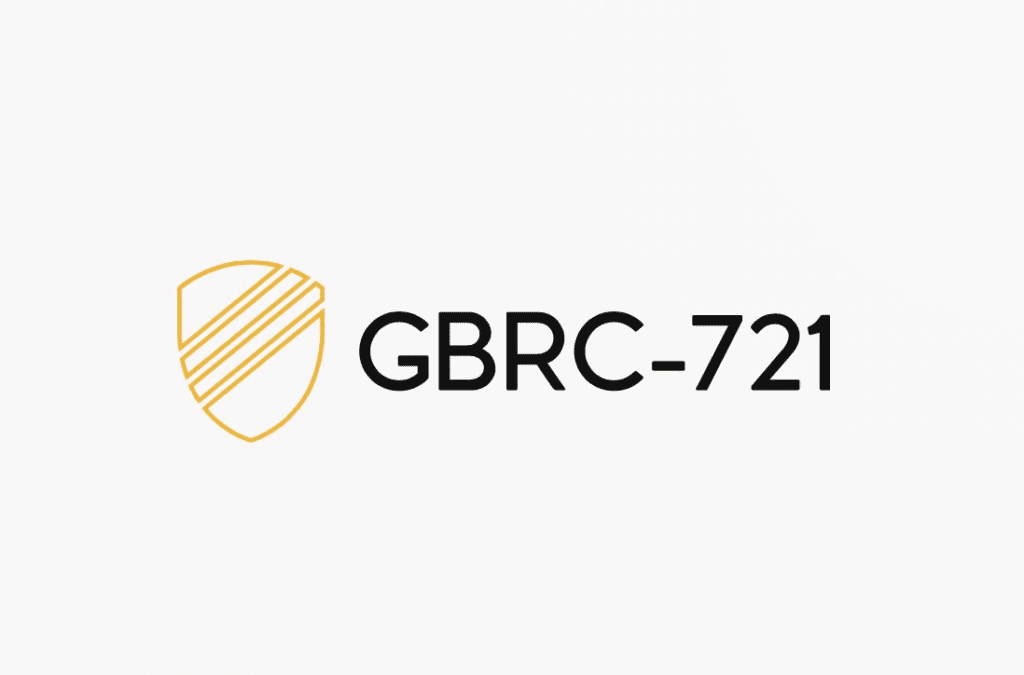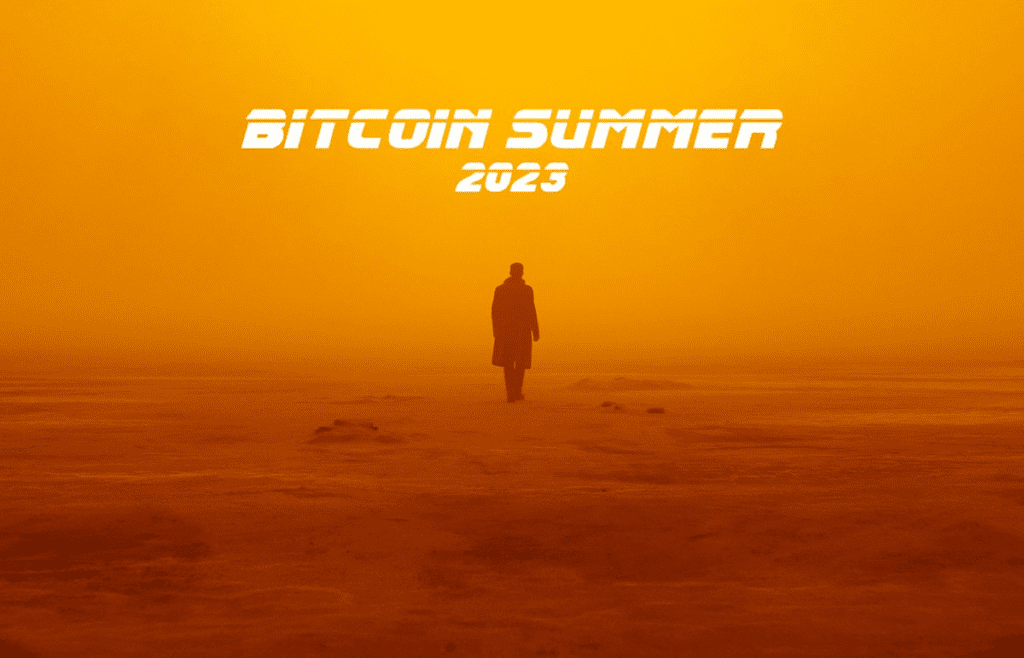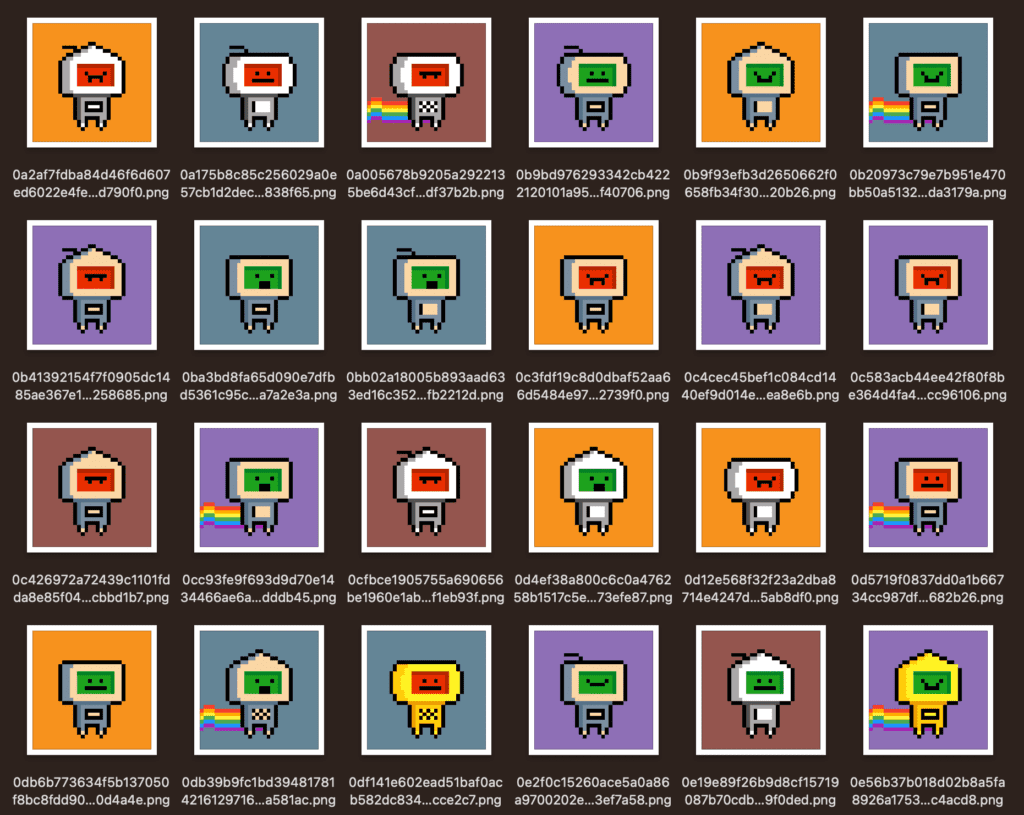GBRC72: Promoting Innovation On Bitcoin Blockchain
1
0

Key Points:
- GBRC721 is a novel Bitcoin Ordinals standard that was created to facilitate the introduction of Non-Fungible Ordinals collections.
- Despite being a very modest collection, the initial demo collection, OrdiBots, succeeded in decreasing total inscription costs by 55%.
The obvious effect of the growing number of inscriptions is that the Bitcoin network cost has risen and stabilized at a higher level, and more authors are joining the Bitcoin Ordinals ecosystem, boosting the community’s desire for Bitcoin. As a result, developers continue to introduce new protocols or standards to alleviate or improve present pain points. GBRC721 (Generative BRC-721) is one of the most eye-catching. Coincu will provide you with a full overview of the GBRC721 protocol and its ecological initiatives.
What is GBRC721?
The protocol’s full name is Generative BRC-721, and its creator is Jerry (Twitter handle @0xJerry543). Jerry also founded the Bitcoin NFT project DogePunks.
The GBRC72 standard is a way to optimize block space use in the Bitcoin ordinals ecosystem, allowing more producers can participate and encouraging innovation. A “deploy” procedure is used in the standard to establish a GBRC72 collection with unique qualities kept on-chain. The attributes from the deployment process are then referenced by a “mint” operation, which yields Non-Fungible Ordinals.
This method reduces block space utilization by 50% to 90%. The proposed standard’s effect was illustrated in a case study using a GBRC72 collection dubbed “OrdiBots,” which showed a 55% decrease in block area. Front-ends must adjust in order to produce and show pictures based on the text data from the mint inscription. This proposed standard sets the framework for efficient, decentralized Bitcoin blockchain innovation.
With increased popularity and availability to additional platforms, the GBRC721 protocol’s front-end interface shows real pictures created by the cast inscriptions rather than text data. This is now possible by scanning the user text inscription’s “gen-brc-721” inscription. The picture may then be rebuilt utilizing on-chain data and saved inside its system architecture in the same manner as is common today.
The total number of minted inscriptions on the Bitcoin NFT protocol Ordinals hit 11,360,287 pieces, according to Dune statistics, and the cumulative fee revenue reached 1,688.1928 BTC, worth $44,705,391. In less than two months after software programmer Casey Rodarmor established the NFT protocol “Ordinals” on January 30 and formally deployed it on the Bitcoin mainnet, the number of inscriptions produced on the Bitcoin chain has surpassed 1 million. It can be shown that ecological growth based on the Ordinals protocol is rapid and growing in scope.
The implementation process of GBRC721
This protocol’s deployment and inscription procedures are similar to those of BRC-20 tokens. The procedure consists of three major operations:
- Create and produce a BRC721 collection using the deployment process. The deployment procedure aims to create a JSON/Text inscription that comprises the collection’s general information and composition. The collection attributes’ Base64 encoded data. It is also possible to establish numerous deployment inscriptions for the same collection, each storing a unique set of attributes.
- Create an irreplaceable serial number using JSON or text inscriptions.
- Convert irregular ordinals to normal serial number inscriptions.
The distinction is that each of its collections is distinct, but it cannot be reviewed before the block is confirmed, resulting in a collection that may be burnt by a large number of individuals, forcing users to incur charges but get nothing.
Based on this, Jerry said that he is contemplating whitelisting the chain in order to better improve the community experience and assure equitable distribution. This will need the addition of a new key to the deployment inscription that will refer to a second inscription holding the whitelist information for claiming NFTs. This will offer a more controllable and equitable distribution approach for GBRC721 collects, reducing injustice due to technical and other factors.
Adopting the GBRC72 standard will improve the efficiency with which Bitcoin block space is used. Since the pictures for the unique qualities are only inscribed once in the deployment transaction, the assets consist of a text file mentioning these traits. The image may then be recreated using the on-chain deploy inscription, and the results verified using the SHA256 output.
Example of a mint operation inscription Ordi.io:
{
"p":"gen-brc-721",
"op":"mint",
"s":"ordibots",
"t_ins":[
"b7205d40f3b1b1486567f0d6e53ff2812983db4c03ad7d3606812cd150c64802i0"
],
"h":"aa0d33b748e0177528a910a56a61c47bee2ba9b69749228d6520049c0fea3f4f",
"id":"554",
"a":[
[0,"bitcoin-orange"],
[0,"rainbow"],
[0,"black-and-white-triangular"],
[0,"square"],
[0,"happy"]
]
}
According to Dune statistics, the GBRC721 ecosystem presently has over 22,000 transactions totaling 3.24 BTC, and its ecosystem initiatives are developing one after the other. The next sections will present the most common initiatives in its environment.
OrdiBots
Jerry built a demo Generative BRC-721 collection named OrdiBots to show the application of this proposed standard. The new standard resulted in a 55% decrease in block size for this collection of 1,000 ordinals constituted of 26 separate qualities. This discovery suggests the possibility of even better efficiency with increasingly complicated trait collections.
The cumulative size of the 1,000 photos is around 663kb. Given the current network charge of roughly 30 sats/vB, the total cost to inscribe the collection is around 0.293BTC ($7,850 at current pricing). Jerry may decrease the size of the whole collection to 294kb (10kb + 284kb) by adopting the GBRC72 standard, resulting in a total projected savings of around 55% of block space. Since OrdiBots is already a fairly light collection, this may be regarded as a lower barrier, and Jerry can anticipate higher efficiency with a collection created with more complicated features.
OrdiBots was inscribed on May 22-23 because, being the first initiative under the GBRC721 innovation criteria, it received enough attention and support from the outset.
At the time, OrdiBots was engraved for about $3. With the market’s constant attention, its floor price grew to a high of 0.12 BTC, which is today comparable to $3,200, a 1,000-fold rise. According to ordinalswallet’s market statistics, the maximum selling price of its golden bundle is 0.175 BTC.
Yet, it remains to be seen if OrdiBots based on the new standard will be able to push the development area to the next level.
Moreover, it is not difficult to discover that OrdiBots can attain such a large multiple rise to its innovation-based criteria, which is detachable from the strong consensus of its community members. It has received a lot of attention by auctioning off gold equipment every day and giving the earnings to the community. Simultaneously, community members have built tools such as rarity inquiry and position rating on their own and have actively participated with the platform and other projects in the ecosystem.
Conclusion
GBRC721 has received a lot of attention because of its first ecological project, OrdiBots, which has a very high growth multiple. Nonetheless, the existing ecological infrastructure must be steadily enhanced.
If this standard is adopted by a large number of collections and authors, front-end interfaces will need to be modified to show the actual picture created by the mint inscription rather than the text data.
Of course, there are many users in the community who are skeptical of operating application development projects on Bitcoin, and there are plenty of observers who are dismissive of the present scenario. Nevertheless, the present Web3 circle or money circle is still in the idea and story-telling stage. During the previous cycle, the market mostly reported news about DeFi, DAO, GameFi, and other EVM chain ecosystem players. The Ordinals agreement has opened up a fresh avenue for the existing market limitations.
DISCLAIMER: The information on this website is provided as general market commentary and does not constitute investment advice. We encourage you to do your own research before investing.
Join us to keep track of news: https://linktr.ee/coincu
Harold
Coincu News
1
0
 Manage all your crypto, NFT and DeFi from one place
Manage all your crypto, NFT and DeFi from one placeSecurely connect the portfolio you’re using to start.









